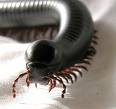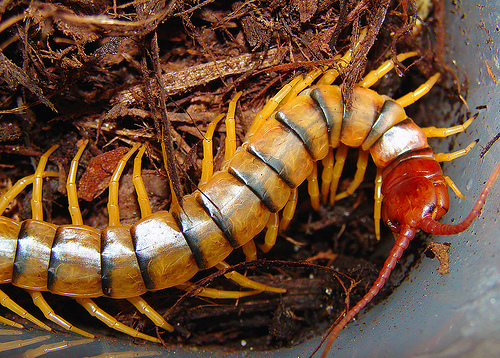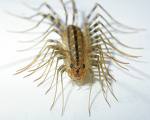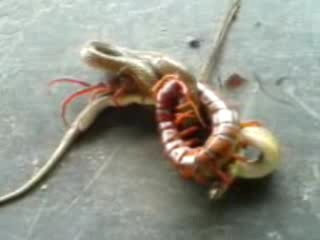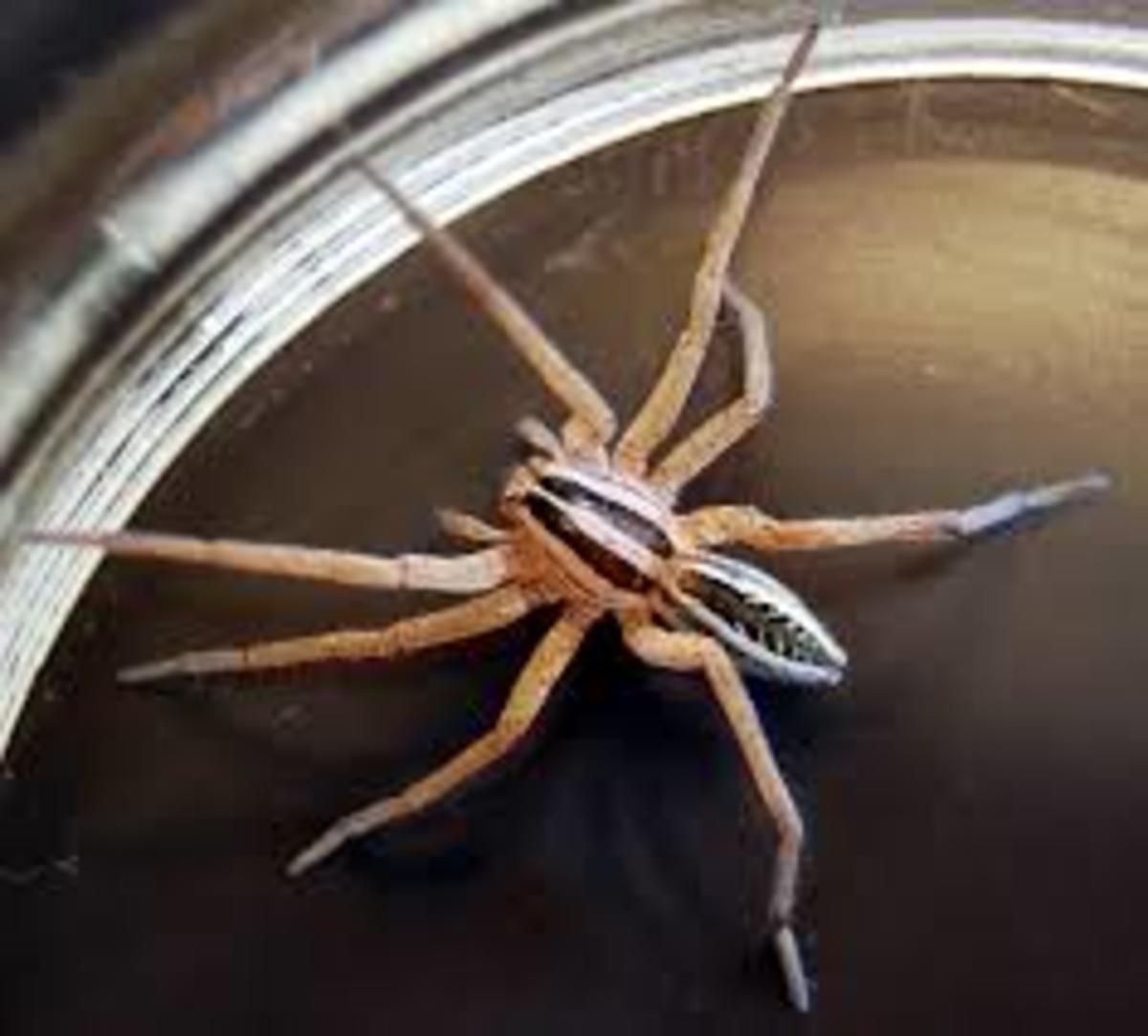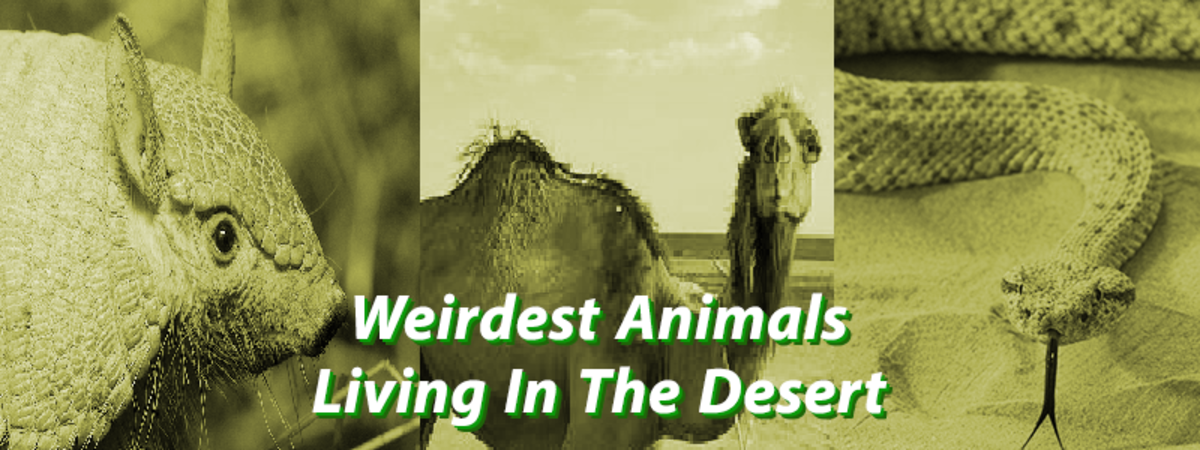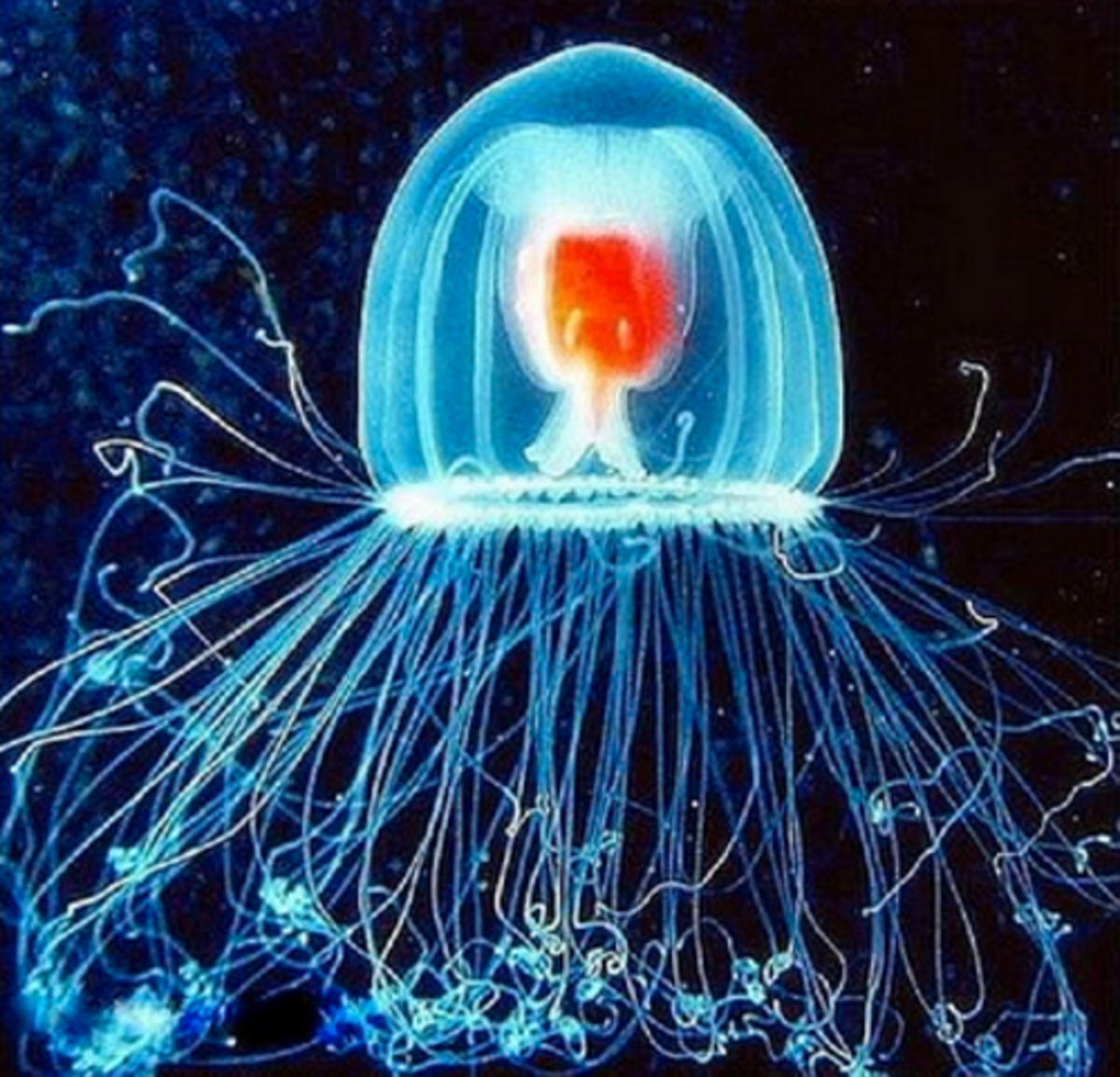Archaic Arthropods: The Centipedes and Millipedes.
Similar in form, but vastly different in character: Centipedes and Millipedes
Click thumbnail to view full-size




Millipedes are even popular pets! But not centipedes.
Why they have multiple legs?
As we enter the fossil record, that curious tale of artefacts “dug up” and showing how plant and animal species have evolved, we can see the strange and well populated world of the Arthropods. Scrolling past spiders and scorpions, to other predatory and venomous creatures that have been with the planet for well over 400 million years, the Chilopoda and Diplopoda: Centipedes and Millipedes, arrest our curious gaze.
Firstly, this is where we have to end the confusion over the harmless, slow moving and plant-eating Millipede, with a character more like a caterpillar, and it’s brother, similar in appearance, the venomous, fast moving and carnivorous Centipede, whose habits, behaviour and venom more closely resemble the scorpion.
Unlike scorpions and some spiders, centipedes are not regularly featured in deaths to humans. Although the large centipedes do have a really nasty venomous bite that can be lethal to a small child. Some of these creatures in the Amazon and other tropical areas prey on small mammals, lizards and other spiders, some even catch bats in full flight! This gives you an idea of the efficacy of their venom. You certainly wouldn’t want one of these hanging from the end of your nose.
Bites - usually referred-to as stings - from the large centipedes, measuring up to 26 centimetres in length, (10 inches), found in South America, the East and the North African deserts, etc., are extremely painful causing local swelling and sometimes necrosis of the sting locality afterwards. The world’s largest centipede for those who must know these things, is the “Scolopendra Giganta” of the Amazon and area. All of these giant species advertise the fact that they should be left well alone by their bright colours and aggressive behaviour…as some even eat small snakes, they are best treated with the utmost respect. It is a good idea to go to hospital when bitten by one of these creatures, especially if the sting involves the head, face or trunk. If the victim is a young child, he may be in serious danger of losing his life, so professional help is needed fast. For an adult, there is little threat to life, but the severe pain (some say more agonizing than a snake or scorpion strike), local swelling, affect on heart rhythm and blood pressure can cause extreme anxiety. Many sufferers say applying a poultice as hot as one can bear helps a lot. Non-prescription pain-killers are useless.
Like their close relatives, the arachnids, centipedes and millipedes have been extremely successful, having been around from the Silurian Period, 420 million years ago. Biologists estimate there may be 8,000 varying species of centipedes, 3,000 of which are known and recorded. Their adaptation to changing climatic conditions have been extraordinary as the planet has cooled, going through many ice-ages. They may have endured these by living a life underneath the ice sheets, this is born-out by the fact that the creatures are nearly blind, only distinguishing between light and dark - some are sightless altogether, relying on sensory hairs and their antennae to bring the picture of the world around them to the tangle of nerves which serve as a brain.
Scorpions do bring a semblance of what we might call romance to their sexual encounters: dancing and exhibiting “foreplay” (see my hubs on arachnids), in the case of centipedes, the sexes are very similar and hard to tell apart. They may construct a simple web of silken threads where the MALE attaches an egg, or “spermataphore,” The female then collects this, carrying it around for a while as she fertilizes it, then depositing it in a sheltered location covered with a glutinous secretion.
When we study the lower or simpler life forms, it seems as if predation is seen as the large eat the small, full stop. This is true of fish, spiders, snakes and centipedes. And the small may eat the smaller young of the same species who mature to eat them in turn. As we see some huge centipedes eating young or small species of snake, we see snakes that are specialized predators of centipedes. They are also eaten by some birds, meercats, shews and some large arachnids, such as tarantulas and scorpions. They can’t be particularly appetizing as they have their defensive sting, a powerful pinch, and glands which produce foul-smelling and corrosive acid all along their bodies. Like scorpions, creatures that are hard to love. Although it’s easy to see why they have been so successful through the ages.
We don’t have dangerous centipedes in bland old Britain. A good thing, seeing a 10-inch Amazonic Scolopendra trotting along the High Street in Purley would cause a mass evacuation! We do have the common brown centipede that can sting if squeezed, and a snake-like yellow fellow, called the Garden Centipede, which has the kids running into the house, but is completely harmless. And a few other species which are rarely seen and harmless. There is another centipede which prefers to live indoors with us, called, unsurprisingly, the “House Centipede” This one-inch creature actually is beneficial as it will prey on cockroaches, silverfish and other pests. It is basically harmless, but can nip quite vigorously if handled, usually resulting in it being shaken-off in the direction it was going anyway; and runs very fast on long legs.
Popularly, we hear that “millipedes which move slowly are bad for the garden as they eat plants whereas centipedes are good as they eat the “bad“ insects“. In modifying this belief, we can observe that most millipedes seem to prefer dead and decaying plant food and that centipedes eat both good and bad garden insects. (Millipedes can be bad for seedlings if they get into the greenhouse).
I haven’t said a lot about millipedes mainly because there doesn’t seem a lot to say unless you are a fan of these creatures and are a Latin scholar. There are even more species at 10,000 world wide than the centipedes. They don't have a thousand legs, as their name suggests, but between 100 and 400, depending on species. In Africa, there is one species, the Giant African Millipede, at 12 inches in length (28cm.) and often kept as a pet. In fact, if you must have one of these arthropods in the casa, this is probably the one to go for. It has no sting, venomous or otherwise, its only defence is a nasty, poisonous secretion, making it unpalatable to most predators. It hides most of the time, makes no sound or mess and it eats cucumbers, bananas (especially the half decayed ones you didn’t get round to eating) and all rotting fruit veggies. I can see how one could become fond of one of these, especially when my budgies won’t stop BLOODY SQUAWKING! And chucking seed and feathers around like it’s carnival time. Can’t teach it to say “Pretty Milly,” though.
Notes
People often ask why centipedes and millipedes have so many legs. The case is different for the two. Centipedes have quite a few longer legs, because they are predators and need speed as well as some pushing strength to plough through leaves and other ground detritus.
Millipedes, on the other hand, have many more, shorter legs which gives them no speed - they are not predators - but lots of tractor power for pushing into the earth rather like earthworms. Incidentally, neither has the number suggested by their names: 100 (centi) and 1000 (mili) but substantially less. If you want to count them, the passive millipede will be sanguine about it, but the centipede will object vigorously, whip and curl around and might give you a venomous nip!
They are composed of many similar segments along their body length. This is evolution showing how she can economise by using less genes to manufacture identical body parts. Rather like the engineers do when they design buses and trains: as the windows, seating, and lighting is repeated along the length of the carriage or coach, the same machine can be programmed to make the identical pieces and save money.

